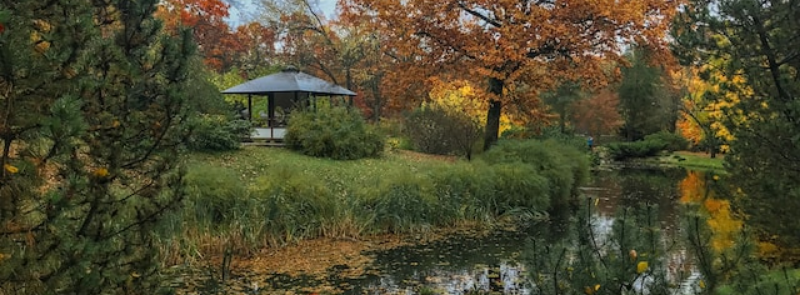
When It Occurs
Annually Last Friday in April
Official Website
Timeline
Days Passed (566)
# Hashtags
#NationalArborDay #TreesAreLife
In the early 1870s, America marked its inaugural Arbor Day, coinciding with the establishment of Yellowstone National Park by Congress. Embrace our enduring affection for nature on April 26, just after Earth Day.
While National Arbor Day consistently falls on the last Friday in April, various states choose different dates throughout the year to observe Arbor Day based on their optimal tree planting seasons.
Historical Background
Origins of Arbor Day:
- The first Arbor Day was celebrated on April 10, 1872, in Nebraska. The idea was conceived by J. Sterling Morton, a Nebraska journalist and politician who recognized the lack of trees in the state, which was primarily prairie land.
- Morton proposed a day dedicated to planting trees, and his idea was enthusiastically supported. On that first Arbor Day, it is estimated that Nebraskans planted more than one million trees.
Spread Across the United States:
- Following the success of the first Arbor Day, other states began to adopt the idea, and by 1882, it had become a popular observance in schools across the nation. Arbor Day eventually became a national event, with President Richard Nixon officially proclaiming the last Friday in April as National Arbor Day in 1970 as part of his environmental initiatives.
International Impact:
- The concept of Arbor Day has spread worldwide, with many countries now celebrating their own versions of the day, often timed to coincide with the best tree-planting season in their region.
Purpose and Objectives
Promoting Environmental Awareness:
- National Arbor Day is primarily about raising awareness of the vital role trees play in maintaining ecological balance. Trees contribute to clean air, provide habitats for wildlife, conserve water, and prevent soil erosion.
Encouraging Tree Planting:
- The day encourages individuals, communities, schools, and organizations to plant trees as a way to improve their surroundings and contribute to a healthier environment. Tree planting events are organized across the country, involving people of all ages.
Educational Opportunities:
- Arbor Day also serves as an educational platform, teaching children and adults about the importance of trees, how to care for them, and the benefits they provide. Many schools and environmental organizations offer programs and resources related to Arbor Day.
Celebrating National Arbor Day
Tree Planting Activities:
- The most common way to celebrate Arbor Day is by planting trees. Communities, schools, and organizations often host tree-planting events where participants can plant a tree or several trees in public spaces, parks, or school grounds.
Educational Programs and Workshops:
- Many communities and environmental groups offer workshops and educational programs on tree care, urban forestry, and the ecological benefits of trees. These programs are designed to empower people with the knowledge they need to care for trees in their own yards or neighborhoods.
Arbor Day Foundation:
- The Arbor Day Foundation, established in 1972, is a key organization involved in promoting Arbor Day and supporting tree planting efforts nationwide. The Foundation provides resources, educational materials, and tree seedlings to encourage widespread participation in Arbor Day activities.
Recognition and Awards:
- Some communities and organizations recognize individuals or groups who have made significant contributions to tree planting and conservation efforts. Awards and recognition ceremonies may be held on Arbor Day to honor these efforts.
Community Involvement:
- Arbor Day events often involve the whole community, including local government officials, businesses, schools, and civic organizations. This collective effort highlights the importance of trees to the community and fosters a sense of shared responsibility for the environment.
Importance of Trees
Environmental Benefits:
- Trees play a crucial role in the environment by absorbing carbon dioxide and releasing oxygen, helping to mitigate climate change. They also filter pollutants from the air, reduce the urban heat island effect by providing shade, and conserve water by reducing runoff and erosion.
Economic Benefits:
- Trees add value to properties and can lower energy costs by providing natural cooling. They also support local economies by creating jobs in forestry, landscaping, and related industries.
Social and Health Benefits:
- Trees contribute to the well-being of communities by providing aesthetic beauty, enhancing mental health, and offering recreational spaces. Studies have shown that exposure to green spaces, including areas with trees, can reduce stress and improve overall health.
Fun Facts About Arbor Day
- Arbor Day in Schools: Schools have historically been a major participant in Arbor Day, with many incorporating tree-planting activities into their curriculum and organizing ceremonies that involve students, teachers, and the community.
- Oldest Arbor Day: The oldest continuously observed Arbor Day is in Villanueva de la Sierra, Spain, which began in 1805.
- State Trees: Many U.S. states have designated a specific tree as their state tree, often highlighted during Arbor Day celebrations.
Global Arbor Days
- Japan: Japan celebrates its version of Arbor Day, known as "Greening Week," in early May, focusing on the planting of trees and other plants.
- Australia: Australia observes National Tree Day in late July, which is organized by Planet Ark and encourages tree planting and nature care activities across the country.
- China: China’s Arbor Day, known as "Tree Planting Day," is observed on March 12, in honor of Sun Yat-sen, the founding father of the Republic of China.
Conclusion
National Arbor Day is a day that emphasizes the critical role trees play in our lives and the environment. Whether through planting new trees, caring for existing ones, or simply appreciating the beauty and benefits they provide, Arbor Day is an opportunity for everyone to contribute to a greener, healthier world. As the day continues to grow in popularity, its message of environmental stewardship and community involvement becomes ever more important in the face of global environmental challenges.


